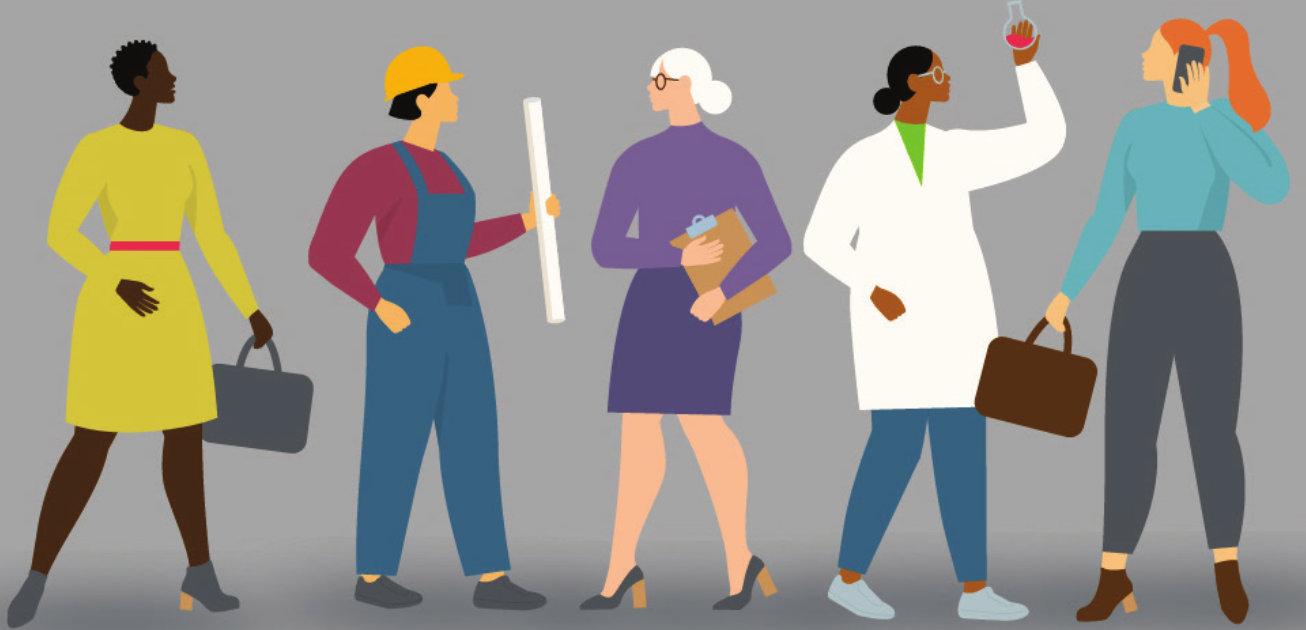How to play a part in encouraging them to pursue a career that desperately needs them

The theme for this year’s International Women in Engineering Day, which was held June 23, was “Imagine the Future,” celebrating those who dare to be part of the solution and are helping to build toward a brighter future.
For me, the best part of being an engineer has been the experience of overcoming challenges to innovate technology solutions that make a positive impact on the world.
It is immensely satisfying to collaborate with a group of people to imagine a new technology, put the idea to paper, prototype it in the lab, and see it through the development process to realize a product that provides significant value to the world.
Over the years, I have worked with teams that design and develop flight controls, engine controls and other electronics for military and commercial aircraft. Our work touches people’s daily lives. Every second a plane takes off and lands safely because of the flight-critical controls we design and build.
The excitement of innovation is at least as great these days. As director of hardware engineering for BAE Systems’ Controls and Avionics Solutions and Power and Propulsion Solutions business areas, I lead teams of mechanical, electrical, test, logistics and firmware engineers.
Some of them create a range of hybrid and electric power technologies that will help to reduce emissions, fuel use and noise in buses, trucks and boats around the world. Others are applying these advances in advanced battery technology to the organization’s avionics business, and found themselves working on the leading edge of aircraft electrification. It is phenomenal to be at the forefront of this new market in aircraft mobility that will ultimately change how we travel.
Along my career journey, there have been many times that I have wished there were more women on the team, helping to engineer these amazing solutions. Our teams innovate best when they include diverse perspectives.
While studying mechanical engineering at Rochester Institute of Technology in the late 1990s, there were only a few women in my program, so we banded together and found support in organizations like Society of Women Engineers. In addition to the technical skills I was gaining, I was also learning how important sisterhood was to feeling supported.
Still, when I first joined the workforce, it didn’t faze me too much. I had grown up around a lot of men and was comfortable among them. Plus, my father was an engineer and supported my interest in building and fixing things.
Then one day, I had a realization. As mechanical design lead for the F-35 aircraft’s vehicle management computer, I was briefing at a design review, getting grilled for a couple of hours in front of dozens of high-ranking program leaders from our company, the prime contractor and its military customer. I was a little nervous, but it went well. After sitting down, though, I looked around the crowd in this gigantic room, and it hit me: I was the only woman.
I thought: Why aren’t there more women? We have got to do something!
Part of the issue is that girls often don’t believe they have what it takes to be a scientist, engineer or mathematician. Maybe it has to do with the tendency of women to not apply for a job unless they possess 100 percent of the qualifications for the position, whereas men will apply even when they meet only 60 percent of them.
In any case, in the years since, I’ve tried to do my part to encourage them to believe that they in fact do, while speaking to high school students about the great work to be experienced in the STEM fields.
Through our company’s partnership, Girls Who Code, an organization whose mission is to close the gender gap in technology and to change the image of what a programmer looks like, I’ve been able to speak to young women at two graduations. Also, with a background in mechanical engineering, I can fix bikes and change my own chain. So I joined Girls Riding Together (GRiT), an organization dedicated to mentoring girls to help them get out, ride, race and maintain mountain bikes.
I am also glad for the opportunity to continue cultivating support among women by serving as colead for the Women’s Inclusive Network employee resource group at my BAE Systems site. The company is very supportive of me and other women seeking to advance our careers in engineering.
Let’s all do what we can to grow the pipeline of girls who choose to pursue engineering, encourage them to boldly set their sights on experiencing the fun and excitement of innovating a brighter future for the generations, and daring to be part of the solution.
Kelly Hoyt is a director of hardware engineering with BAE Systems.
Our teams innovate best when they include diverse perspectives.